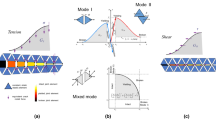Summary
Commercial explosives behave non-ideally in rock blasting. A direct and convenient measure of non-ideality is the detonation velocity. In this study, an alternative model fitted to experimental unconfined detonation velocity data is proposed and the effect of confinement on the detonation velocity is modelled. Unconfined data of several explosives showing various levels of non-ideality were successfully modelled. The effect of confinement on detonation velocity was modelled empirically based on field detonation velocity measurements. Confined detonation velocity is a function of the ideal detonation velocity, unconfined detonation velocity at a given blasthole diameter and rock stiffness. For a given explosive and charge diameter, as confinement increases detonation velocity increases. The confinement model is implemented in a simple engineering based non-ideal detonation model. A number of simulations are carried out and analysed to predict the explosive performance parameters for the adopted blasting conditions.
Similar content being viewed by others
Author information
Authors and Affiliations
Rights and permissions
About this article
Cite this article
Esen, S. A Statistical Approach to Predict the Effect of Confinement on the Detonation Velocity of Commercial Explosives. Rock Mechanics and Rock Engineering 37, 317–330 (2004). https://doi.org/10.1007/s00603-004-0026-3
Received:
Accepted:
Published:
Issue Date:
DOI: https://doi.org/10.1007/s00603-004-0026-3




